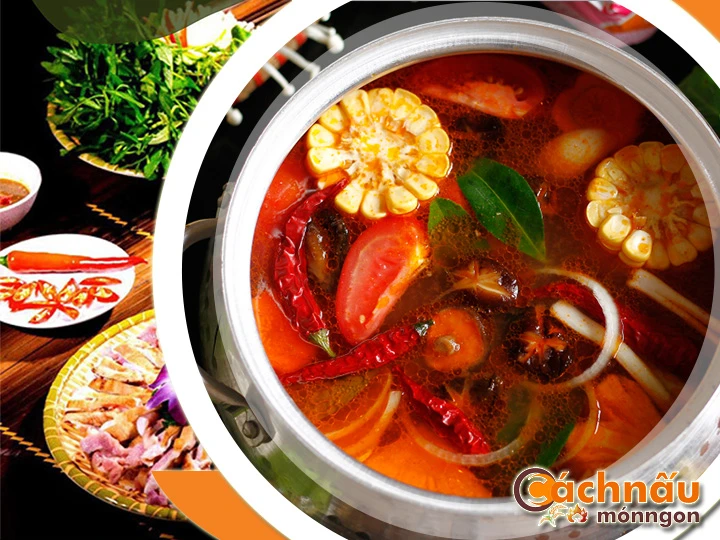This comprehensive guide explores the sum of all parts you need to discover about rabbit hot pot, from its historical background to modern variations, nutritional benefits, and cooking directions for creating the perfect meal at home. Whether you are a professional cook or a aspiring chef, this guide will encourage and guide you to hone your craft of rabbit hot pot.

A EVOLUTION ALONG WITH CUSTOMS OF STEWED RABBIT.
Rabbit hot pot is a one-of-a-kind and traditional dish with meaningful cultural roots in multiple countries. Its renown stems not only from its savory flavor but also from its legacy and traditions.
1. Tracing the Roots concerning Rabbit Hot Pot.
- The Start: Braised bunny dish came from rural areas where wild hares were a widely available, valuable food source. In China’s past, it was a loved recipe, particularly during festive times.
- Adopted in Various Places: In Western regions like Belgium, rabbit was traditionally used in stews, adapting into modern versions of rabbit casserole as the dish found fans worldwide.
2. Traditional Rabbit Cuisine integral to East Asia's Customs.
- In China: Known as Sichuan's rabbit hot pot delicacy, rabbit hot pot is highly regarded in spicy Sichuan cuisine, admired for its robust flavors and typically served at family reunions.
- In Korea and Japan: While not widely found, rabbit hot pot is infrequently served as a health-focused recipe in the Korean Peninsula, or borrowing ideas from Japanese hot pot traditions in the Japanese archipelago, incorporating local plants and flavors.
- Within Vietnam: Although rabbit hot pot is not widely consumed daily, it is famous during unique moments or in villages where rabbit meat is readily available. It is often seasoned with distinctive spices such as citronella, ginger, and hot chili, paired with fresh vegetables like kangkong, mustard leaves, or mimosa vegetables. This dish is enjoyed for its singular taste and high nutritional value, frequently eaten at social meals.
Ở vùng đất Việt Nam, tuy không thể xem là món ăn đại trà ngày qua ngày, nhưng nổi tiếng trong các dịp đặc biệt hoặc ở các vùng quê, nơi thịt thỏ được tìm thấy nhiều. Thường được nấu cùng các loại gia vị như sả, thơm gừng, và ớt cay, kết hợp với rau nhút. Món ăn này rất được ưa chuộng nhờ hương vị độc đáo và lợi ích sức khỏe, thường được thưởng thức tại.
3. Rabbit Casserole embedded in European Culinary Traditions.
- Within France: Frequently enjoyed as a hearty stew with red wine sauce, aromatic herbs including rosemary, and seasonal roots. Rabbit hot pot is a classic dish for holiday meals.
- Across Italy: The dish called “Cacciatore”, featuring rabbit prepared with a tomato and wine base, is a early version of rabbit-based hot pots.
MASTERING RABBIT HOT POT: RECIPES AND METHODS
Rabbit hot pot is a adaptable dish that blends seasonal ingredients, flavorful broths, and distinct techniques to create a rich and satisfying meal. Below are detailed insights into the primary methods and strategies to master rabbit hot pot.
Basic Recipe for Rabbit Hot Pot
* Required Ingredients:
- 1 whole rabbit (sectioned)
- 4 cups of broth (bone broth)
- Vegetables (potatoes)
- Spices and herbs (star anise)
- Seasonings (soy sauce)
- Optional: side dishes for serving
* Method:
- Prepare Your Meat: Wash and chop the rabbit into pieces. Prepare with a pinch of salt, pepper, and a drizzle of soy sauce for half an hour to enrich the flavor.
- Make the Broth: Heat a pot with a bit of oil. Sauté garlic and sliced ginger until aromatic. Add your selected stock and bring it to a simmer.
- Cook the Meat: Add the rabbit pieces into the pot and let them simmer on gentle heat for 30-40 minutes until tender.
- Include the Veggies: Add your chosen vegetables and cook until they are tender but still fresh-looking.
- Serve: Transfer the hot pot to a serving dish. Serve with dipping sauces and extras like rice or noodles.
Mastering Rabbit Hot Pot Techniques
- Seasoning:
. Marinate the rabbit with a combination of salt, pepper, and aromatics to amplify its base chế biến lẩu thỏ flavor.
. For more richness, use wine, soy sauce, or a mix of herbs like rosemary and thyme.
- Adding Ingredients Strategically:
. Start by boiling the rabbit in the broth to extract its essence.
. Introduce vegetables step by step based on their texture needs.
- Cooking Time:
. Avoid overcooking the rabbit, as it can turn chewy.
. Test for readiness by checking if the meat easily separates from the bone.
- Broth Adjustments:
. Perfect the flavor by adding extra herbs as needed.
. Experiment with different types of broths, such as spicy Sichuan-style variations.
Pro Tips for Rabbit Hot Pot
- Fresh Ingredients: Always choose fresh rabbit meat and farm-fresh produce for the highest quality.
- Balance Flavors: Be attentive of the spiciness in the broth. Taste and tweak frequently during cooking.
- Creative Accompaniments: Offer a range of sauces like sesame paste or savory soy mixes to elevate the dining experience.
- Visual Appeal: Use a communal pot or serve the hot pot as a focal point to promote sharing.
With mastery of these methods and recipes, you can create a rabbit hot pot that’s delicious and attractive, ensuring it becomes a standout dish for any dining experience or event.